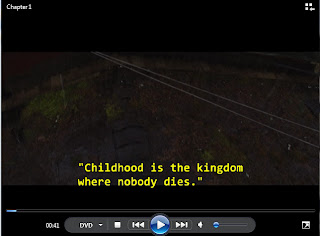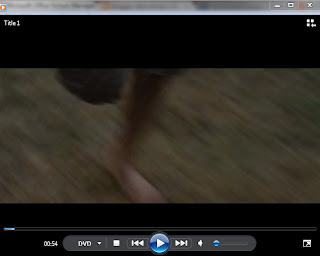Continuity Shots refer to shots that are taken after a film is completed to insert wherever they are required to maintain continuity. It may be a bridging shot taken from the stock library or a shot inserted in the script afterwards.
There are various types of continuity shots, some of which we studied in our media class to be able to use in our own constructions. Following are:
Establishing Shot is usually a vista shot that covers vast area to show the location of the media product and it usually establishes an overview for better understanding of the shot that follows.Also, it sometimes establishes when a scene takes place. For example an establishing shot in the night may signify a threat or a tragedy to follow.
180 Degree Rule is a camera shot whereby two characters facing each other are shot in such a way that the camera is placed on the same side of the axis throughout the scene. If A is talking to B,the camera is placed on the left shoulder of A, and when B is talking to A, the camera is placed on B's right shoulder so that the same side of the line of axis is maintained.
30 Degree Rule is a camera shot whereby the camera captures the same subject from various positions of 30 degrees.
Cross-Cutting is a camera editing technique whereby two activities occurring simultaneously in two different locations precede one another in order to signify parallel action occurring at the same time.
Match on Action/ Match Cut occurs whereby two shots, when put together, complete an action. For example the first shot captures a race whereby many boys are running while the second shot shows one of the boys winning the race while the rest follow.
Eye-Line Match occurs whereby the first shot establishes a character's position while the following shot establishes the character's action.
Axial Cut is an editing technique whereby the second shot captures the object or character from a farther or a closer point of view than the original one.
Point Of View Shot is one that captures another character or object from a character's own point of view and not of the camera.
Cut Away is a camera editing technique whereby an extra shot, not necessarily of significance to the main action in the film, is inserted in order to prolong the time sequence of the shot.
Buffer Shot are shots that are taken in post-production if a particular shot was not shot perfectly, initially. It is used to disguise any mistake in the film.
L-Cut shots are shots that are synchronized perfectly, however, their transitions are not very well-synced. This may be done deliberately in order to attract the audience more towards the content of the speech rather than the visuals.
Fast Cutting is an editing technique whereby the shot is very fast-paced and usually signifies an action or hyper activity.
Slow Cutting is any shot that is longer than fifteen seconds. It is usually very slow paced and signifies the ease of the character in whatever action he is performing.

Transitions: Transitions are basically the various techniques in which a certain shot changes to another shot. For example to show a flashback, one might have to use a transition to give the impact of a change in the time sequence.
There are various types of continuity shots, some of which we studied in our media class to be able to use in our own constructions. Following are:
Establishing Shot is usually a vista shot that covers vast area to show the location of the media product and it usually establishes an overview for better understanding of the shot that follows.Also, it sometimes establishes when a scene takes place. For example an establishing shot in the night may signify a threat or a tragedy to follow.
180 Degree Rule is a camera shot whereby two characters facing each other are shot in such a way that the camera is placed on the same side of the axis throughout the scene. If A is talking to B,the camera is placed on the left shoulder of A, and when B is talking to A, the camera is placed on B's right shoulder so that the same side of the line of axis is maintained.
30 Degree Rule is a camera shot whereby the camera captures the same subject from various positions of 30 degrees.
Cross-Cutting is a camera editing technique whereby two activities occurring simultaneously in two different locations precede one another in order to signify parallel action occurring at the same time.
Match on Action/ Match Cut occurs whereby two shots, when put together, complete an action. For example the first shot captures a race whereby many boys are running while the second shot shows one of the boys winning the race while the rest follow.
Eye-Line Match occurs whereby the first shot establishes a character's position while the following shot establishes the character's action.
Axial Cut is an editing technique whereby the second shot captures the object or character from a farther or a closer point of view than the original one.
Point Of View Shot is one that captures another character or object from a character's own point of view and not of the camera.
Cut Away is a camera editing technique whereby an extra shot, not necessarily of significance to the main action in the film, is inserted in order to prolong the time sequence of the shot.
Buffer Shot are shots that are taken in post-production if a particular shot was not shot perfectly, initially. It is used to disguise any mistake in the film.
L-Cut shots are shots that are synchronized perfectly, however, their transitions are not very well-synced. This may be done deliberately in order to attract the audience more towards the content of the speech rather than the visuals.
Fast Cutting is an editing technique whereby the shot is very fast-paced and usually signifies an action or hyper activity.
Slow Cutting is any shot that is longer than fifteen seconds. It is usually very slow paced and signifies the ease of the character in whatever action he is performing.

Transitions: Transitions are basically the various techniques in which a certain shot changes to another shot. For example to show a flashback, one might have to use a transition to give the impact of a change in the time sequence.












No comments:
Post a Comment